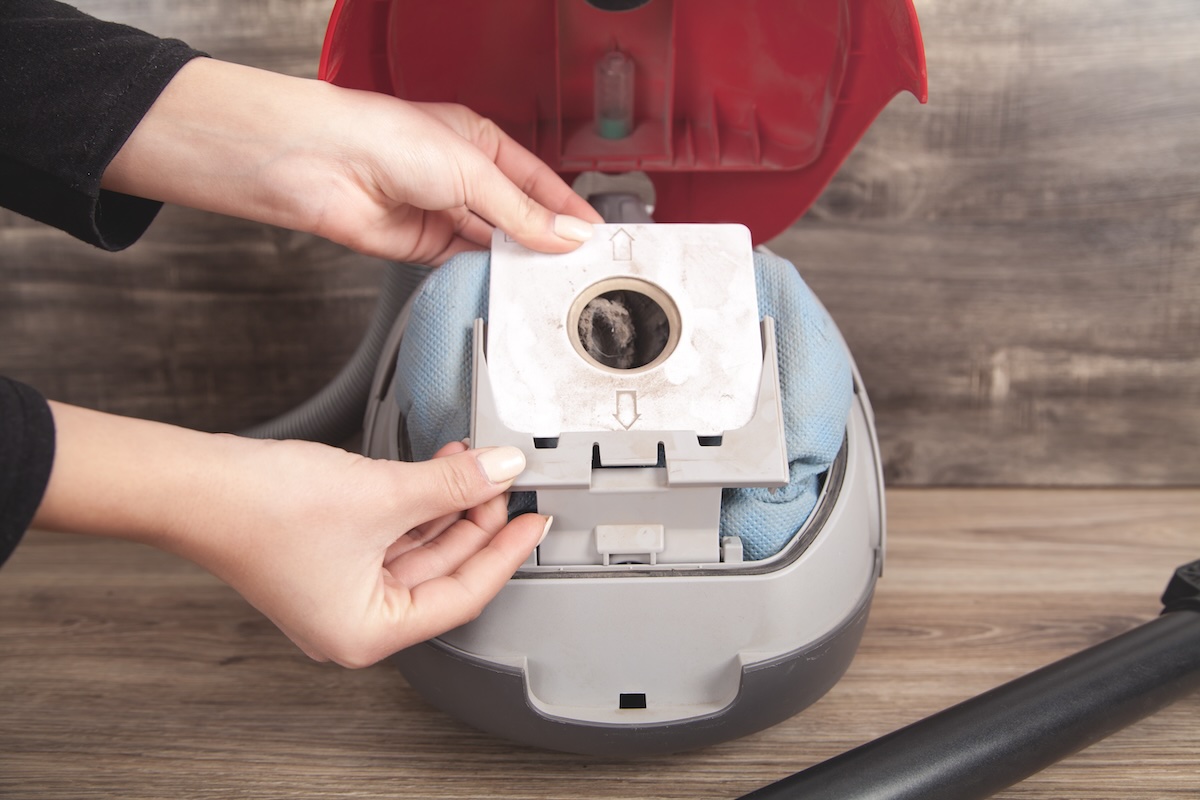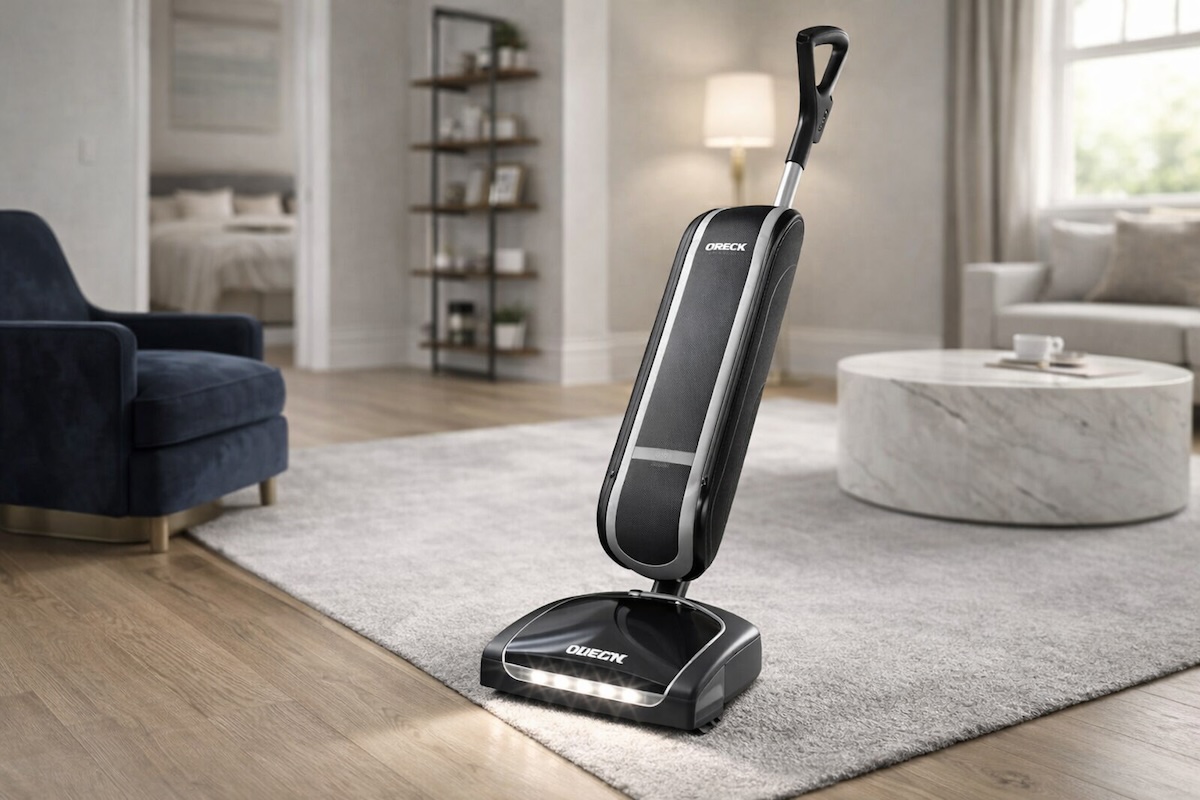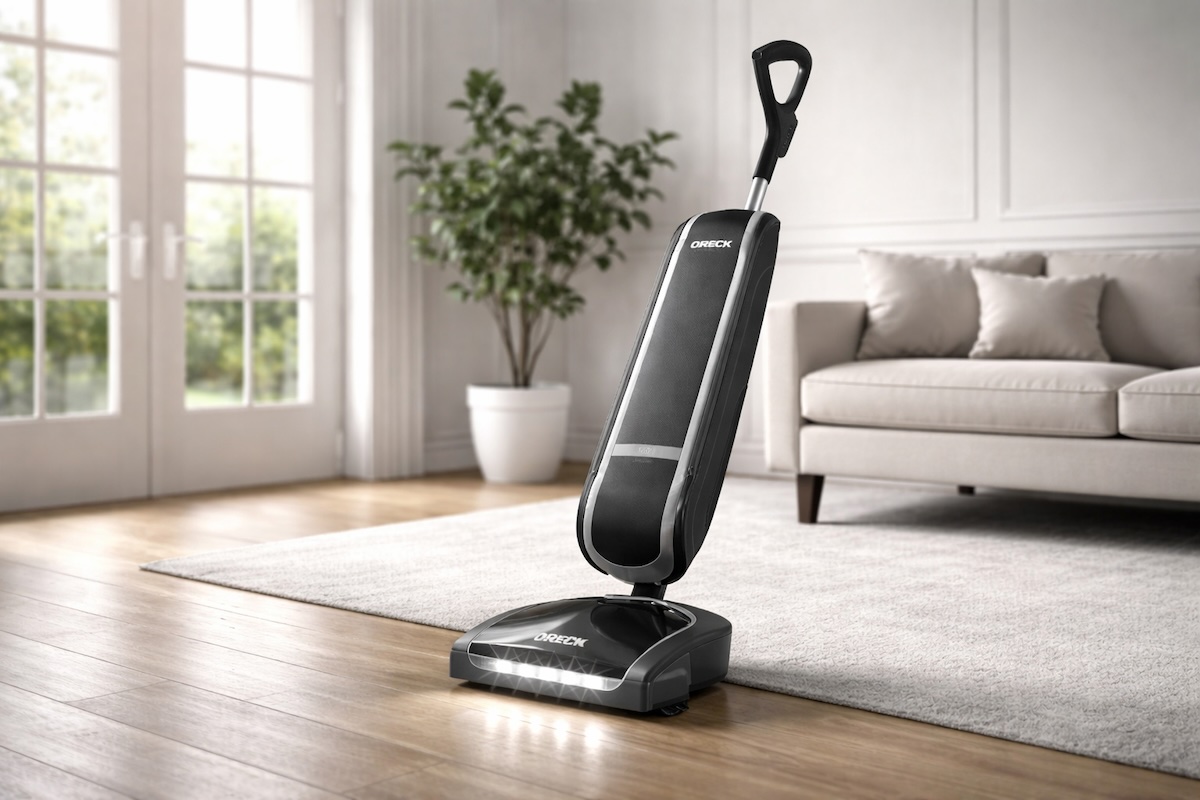Nobody gets excited about buying vacuum bags. They’re not flashy, they don’t plug in, and you’ll never see one in a glossy ad. But behind the scenes, that little paper or microfiber pouch is doing some heavy lifting. A good bag is more than just a dirt catcher — it’s the “lungs” of your vacuum. It controls airflow, keeps suction steady, and shields the motor from dust that would otherwise grind away at its lifespan.
That’s also why OEM vacuum cleaner replacement bags are so underrated. They may look like an afterthought, but they’re precision-matched to each machine for a reason. The right bag doesn’t just fit snugly — it filters at the level the motor was designed for, keeps fine dust from sneaking back into the air, and lets the vacuum “breathe” the way it should. When people cut corners with generic (or overdue) replacement bags, they don’t always just lose suction; they can shorten the life of the whole machine.
Here’s the catch: most homeowners aren’t sure when to swap them out. It’s arguably one of the simplest vacuum cleaner maintenance-related questions you can ask — how often should I change my vacuum bag? — yet it’s also one of the most misunderstood. People wait until the bag looks swollen, or until the vacuum “smells funny,” and by then, performance has already slipped.
Why Bag Changes Matter More Than Most People Think
A vacuum cleaner depends on airflow to operate. The motor pulls air through the nozzle, across the bag, and out through the exhaust.
The vacuum’s bag does double duty. Sure, it collects dirt, but it also acts as a filter the whole machine depends on. Every time you vacuum, that bag is straining out clouds of fine dust, stray pet hair, and fibers you can’t even see. The more it fills, the tighter those layers get — and the harder it is for air to move through. That loss of airflow is what makes suction drop and motors work overtime.
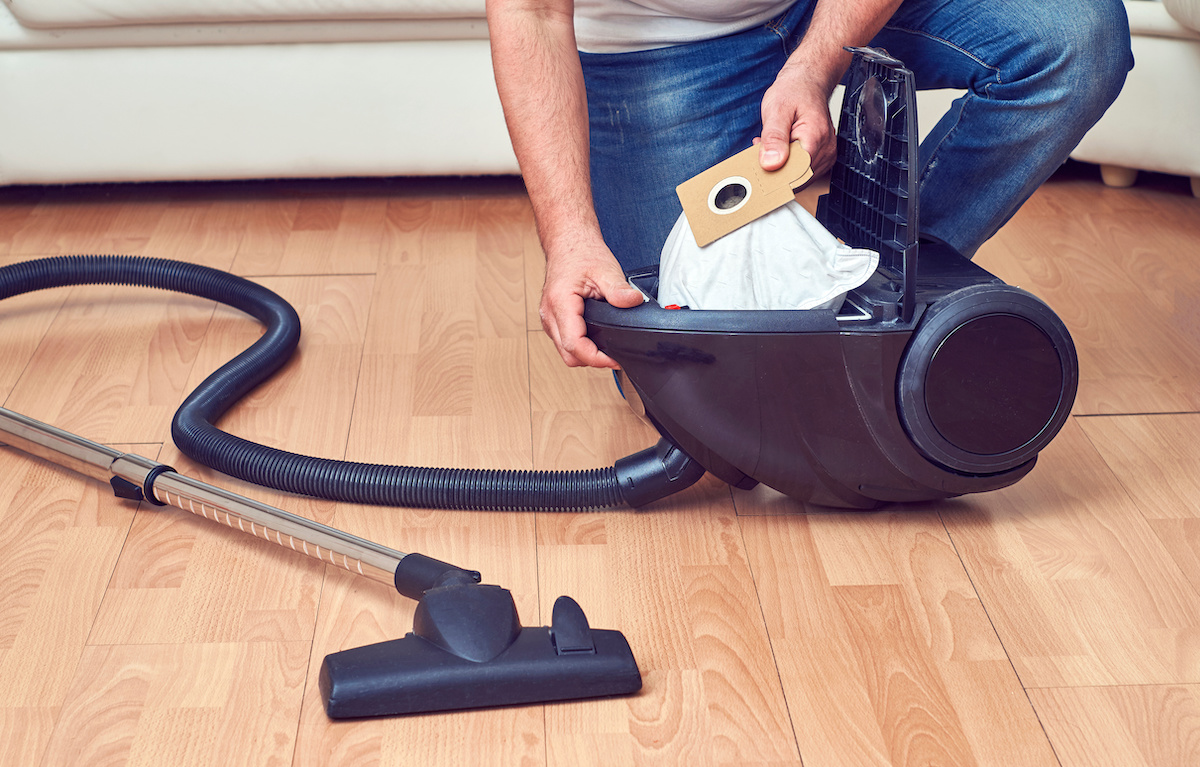
When airflow drops, three things happen:
- Suction gets weaker, so you go over the same spot multiple times.
- Dust and allergens are more likely to leak into the air.
- The motor runs hotter, putting stress on the machine and shortening its life.
That’s why changing the bag on schedule isn’t just about tidiness — it’s a form of maintenance. A fresh bag keeps airflow steady, which means your vacuum cleans better, runs cooler, and avoids the strain that burns out motors early.
In the same way a car lasts longer with routine oil changes, your vacuum rewards you with years of strong suction and dependable performance when you stay on top of bag replacements.
General Guidelines for Replacement Frequency
There’s no single number that fits everyone because homes vary. A small apartment with hardwood floors and no pets will fill bags much more slowly than a carpeted house with kids and two shedding Labradors. That said, there are good rules of thumb:
Typical Bag Replacement Intervals
| Home Type | Average Replacement Timing |
|---|---|
| Small home or apartment, mostly hard floors, no pets | Every 2–3 months |
| Medium home, mixed flooring, light pet hair | Every 1–2 months |
| Large home, mostly carpet, heavy pet hair or kids | Every 2–4 weeks |
These intervals are averages — your own usage may differ. Think of them as starting points, not hard deadlines.
Signs Your Vacuum Bag Is Ready to Go
Even with those guidelines, your vacuum will usually tell you when it needs attention. Common signs include:
- Weaker suction even on the highest setting.
- Stronger odor — dust, pet smell, or a “musty” scent when the machine runs.
- Indicator light (if your model has one) showing “full bag” or “check bag.”
- Visible dust leakage around seams or at the bag collar.
The tricky part is that vacuum bags rarely look “bursting full.” Fine dust and fibers pack tightly, reducing airflow long before you see a bulge. That’s why relying on timing and performance cues is smarter than waiting until it’s physically overflowing.
When to Replace Bags More Frequently
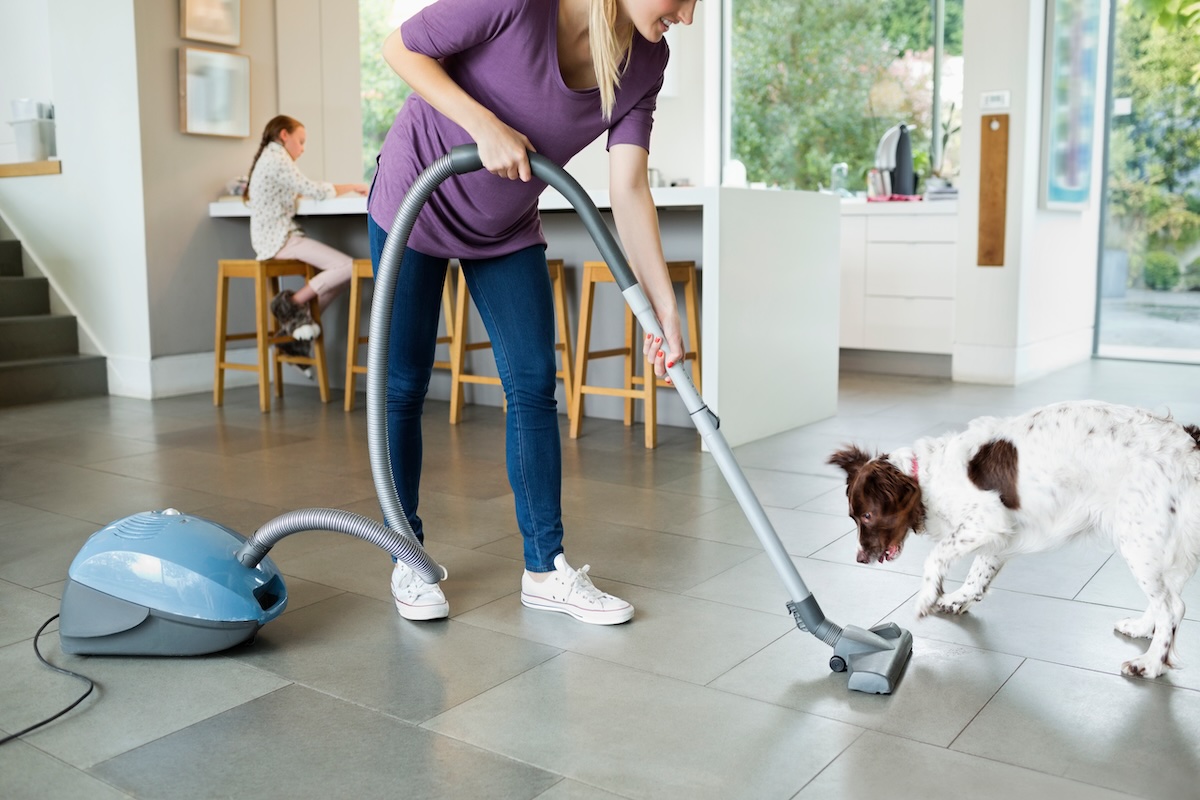
Some homes need bag changes more often than the “average” timelines. Here are situations where you’ll want to stay ahead of schedule:
1. Households With Pets
Shedding fur and dander can fill a bag faster than dust alone. Long-haired breeds in particular cause clogs near the bag collar, making it seem “full” even if the rest of the bag has space left. If you have multiple pets, expect to replace your bag about twice as often as a pet-free home.
2. Allergy and Asthma Concerns
For allergy sufferers, the vacuum bag isn’t just storage — it’s the first line of defense against pollen, dust mites, and microscopic allergens. Once airflow drops, those particles can slip past the bag and re-enter the air. Changing the bag sooner rather than later keeps filtration efficiency high.
3. Seasonal or Deep Cleaning
Spring cleaning, holiday prep, or move-in/move-out cleanups all push a vacuum harder than normal weekly runs. If you’ve just finished vacuuming every baseboard, couch cushion, and closet in the house, don’t assume the bag can keep going. Swap it out afterward to reset performance.
4. Commercial or Heavy-Duty Use
Businesses that vacuum daily — offices, small shops, rental properties — will burn through bags faster. In these settings, it’s often practical to replace on a fixed schedule (weekly, biweekly) instead of waiting for symptoms of a full bag.
Bag Materials and Their Role
Not all vacuum bags are created equal. The material itself plays a big role in how long a bag lasts before airflow suffers.
Common Bag Materials
| Material | How It Performs | Replacement Frequency |
|---|---|---|
| Paper | Basic filtration, lower airflow tolerance, fills quickly with fine dust | Needs more frequent changes |
| Synthetic / Microfiber | Better airflow, traps smaller particles, resists tearing | Lasts longer before airflow drops |
| HEPA-Grade | Captures the finest particles, ideal for allergy households, often multilayered | Changed on same schedule, but improves indoor air quality |
Upgrading to synthetic or HEPA-grade bags doesn’t mean you can forget about changing them — they still need regular swaps. What they do give you is breathing room. These bags are built with multiple layers that hold fine dust without choking off airflow, so suction stays stronger for longer. They also trap far more of the tiny particles that paper bags let slip by.
If clean air is a high priority in your home — whether it’s for allergy relief, protecting kids, or just keeping the house fresher — the step up to HEPA or microfiber bags is a very worthy investment.
The Danger of Waiting Too Long
It’s tempting to stretch a bag “just one more week,” but the downsides add up quickly:
- The motor runs hotter, which can shorten its life.
- Suction declines, leaving dirt and grit deep in carpet fibers.
- The bag may split at the seams if it gets overstuffed, dumping everything back into the vacuum’s cavity.
A $3 bag replacement is cheaper than a $300 repair. Treat bag changes as a small insurance policy on your machine.
Think of it the same way you think about changing oil in a car: it’s a small, routine step that saves you from big headaches down the line. In the long run, those timely bag changes add years to your vacuum’s life.
Brand-Specific Quirks Worth Knowing

While the basic rule is “change it when airflow drops,” some of the more premium brands like Miele, Riccar, Sebo, and others design their machines a little differently. These manufacturers engineer their vacuums with sealed systems, advanced sensors, and multi-layer bags that hold more fine dust than you’d expect.
The upside is cleaner air and longer motor life. The trade-off is that you can’t always judge bag life by sight alone.
Trust the machine’s indicators and the way it feels in use — those small quirks are part of what makes these high-end vacuum cleaners last for decades when cared for properly.
Miele
Miele canisters are engineered with tightly sealed filtration. Their bags hold a lot of fine dust, but airflow can drop before the bag looks anywhere near full. Luckily, most Miele vacuum models include a reliable bag-change indicator — trust it. If it says change, don’t wait for visible swelling.
Riccar/Simplicity
Simplicity and Riccar are known for strong suction and excellent sealed systems. Their bags often use multi-layer materials that pack more debris per bag. Even so, suction-focused motors mean they’re sensitive to airflow loss — a half-full bag can still need swapping if suction feels weaker.
Sebo
Sebo vacuums are built with German engineering that prioritizes airflow efficiency and motor protection. Their bags are large and durable, and most models feature an airflow sensor that alerts you when the bag is too full or a blockage is restricting performance.
What sometimes throws people off is that the bag may still look roomy when the light comes on. That’s by design. The machine is protecting its motor, not judging the bag by appearance. If your Sebo tells you it’s time, listen to it — that early swap is part of what keeps their motors famously long-lasting.
Older Uprights
Machines without sealed systems or indicator lights are trickier. If you notice dust leaking back into the air or collecting around the bag collar, it’s a sure sign the bag needs replacing. For older uprights, changing the bag early is better than pushing it to capacity.
The Airflow vs. Capacity Myth
A common, understandable misconception is that you should wait until the bag looks “physically full.” However:
- Bags lose airflow efficiency long before they hit capacity.
- Fine dust, pet hair, and fibers clog pores in the material.
- The bag may be only half full by volume, but airflow has already dropped to the point where performance suffers.
Picture a coffee filter after you’ve run a few cups through it. The paper isn’t completely full, but once it’s coated with grounds, the water slows to a crawl. The same principle applies to vacuum bags. They may look like they’ve got room to spare, but fine dust and fibers clog the tiny pores in the material long before the bag is visibly stuffed.
That hidden clogging is what chokes off airflow, weakens suction, and makes your vacuum feel tired before its time.
Tips for Staying on Top of Bag Changes
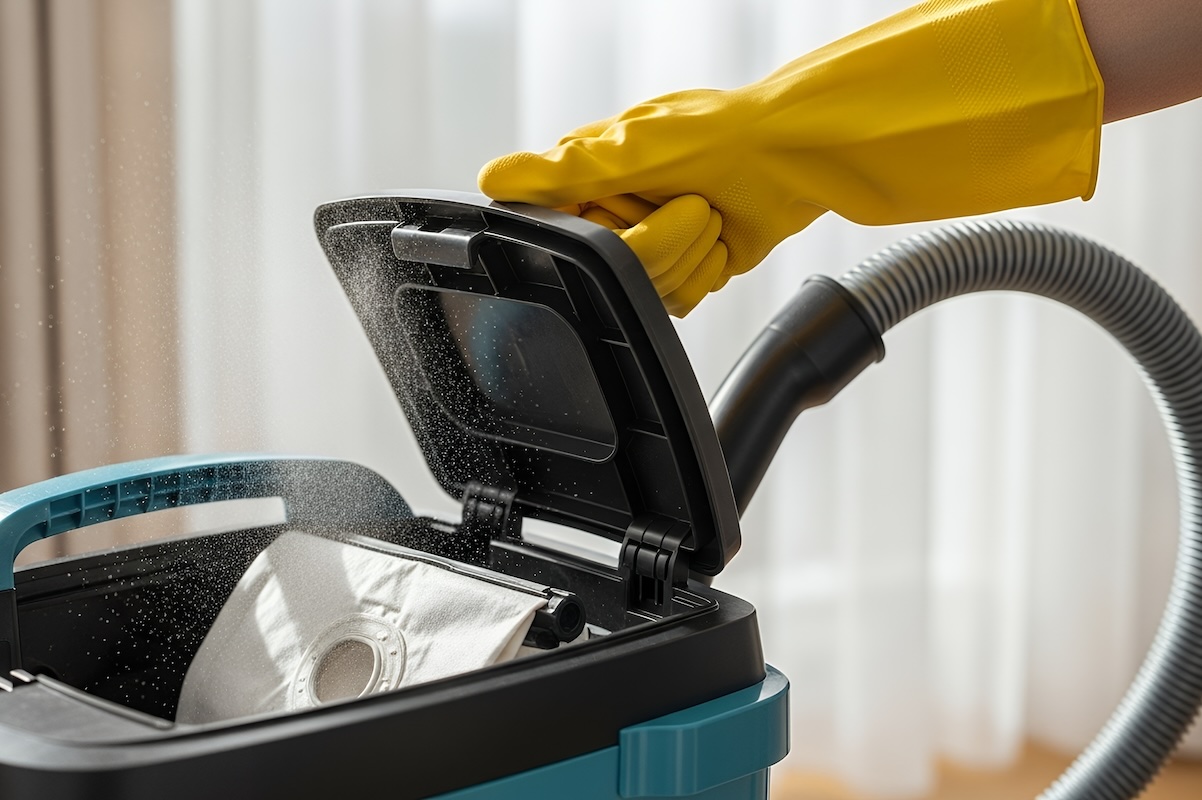
Keep Spares Handy
It’s easy to put off changing a bag when you realize you’re out of replacements. Buy bags in multi-packs and keep at least two or three on hand. That way, swapping feels like a quick reset instead of a chore.
Pair Bag Changes With Other Chores
If you vacuum weekly, set a loose rhythm: check the bag every month, replace every two or three. Tying it to other household habits (filter changes, laundry cycles, seasonal cleaning) makes it automatic.
Don’t Forget the Filters
Most bagged vacuums also use pre-motor and exhaust filters. These don’t need replacing as often as bags, but clogged filters can mimic the same “weak suction” symptoms. Check your manual for timing, and replace them on schedule.
Use Indicator Lights as a Guide, Not a Gospel
Some bag sensors are more sensitive than others. If the light says “full” but you just installed a bag, make sure the collar is seated properly. On the flip side, don’t ignore a warning light just because the bag doesn’t look full.
Quick Reference: How Often to Replace Vacuum Bags
For anyone who prefers a snapshot over a long explanation, here’s the cheat sheet:
Bag Replacement Schedule (Typical, May Vary)
| Situation | Recommended Change |
|---|---|
| Small home, light cleaning, no pets | Every 2–3 months |
| Medium home, mixed floors, some pet hair | Every 1–2 months |
| Large home, carpeted, multiple pets/kids | Every 2–4 weeks |
| Allergy-sensitive households | Change sooner, even if not visibly full |
| Commercial/heavy-duty use | Weekly or biweekly |
Don’t Stress Over the Cost
People sometimes hesitate to change bags because they want to “get their money’s worth.” But a typical high-filtration bag costs just a few dollars, and they typically come in multi-packs. Compare that to the cost of burned-out motors, weaker suction, or the frustration of cleaning the same spot twice.
In most cases, replacing a bag early is the smarter financial move. You’ll spend a little more on bags, but save a lot in machine repairs and extend the life of your vacuum.
Wrapping It Up

Vacuum bags don’t come with a countdown clock, but they’ll still give you plenty of signals if you know what to look for. Your home’s size, your cleaning habits, and even the way your vacuum is built all play into how fast a bag fills. That’s why the best rule is to treat the general replacement intervals as guidelines, not absolutes.
Pay attention to the cues: suction that feels a little weaker than usual, a faint musty odor when you turn the machine on, or dust lingering on the floor after a pass. Those are your vacuum’s way of saying, “Time for a fresh bag.” Changing it a little early keeps your machine running at full strength and your home feeling cleaner.
Think of replacing your vacuum bag as cheap insurance. For just a few dollars, you reset airflow, protect your vacuum’s motor, and make sure your floors are actually getting clean. That’s a trade worth making every time.
If you’re not sure which bags your model takes — or whether an upgraded HEPA bag is right for you — it’s worth checking with a vacuum specialist. Having the right bag on hand and changing it at the right time will keep your vacuum running like it should for years to come.

